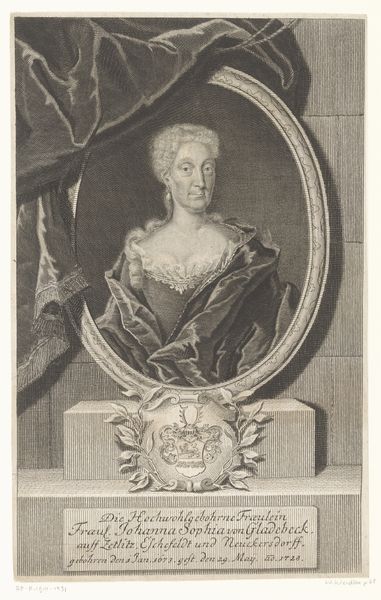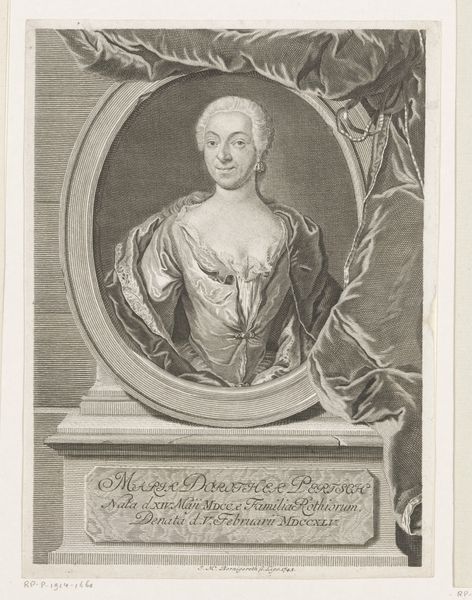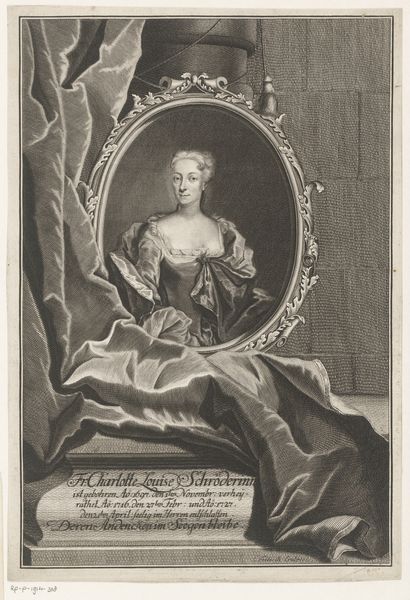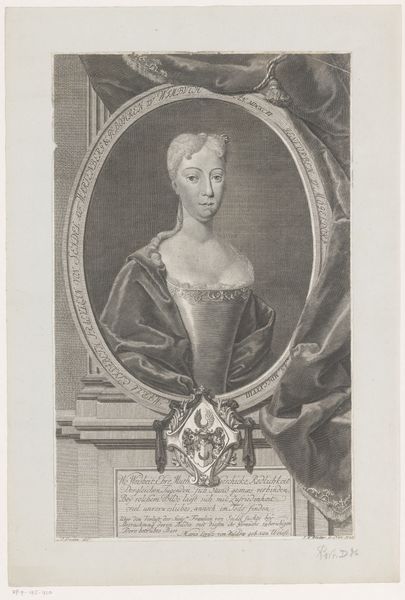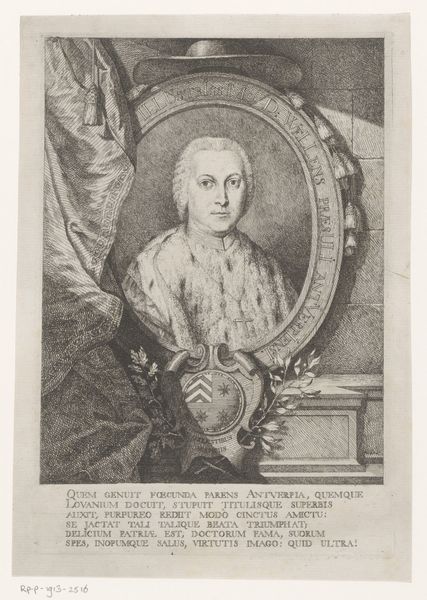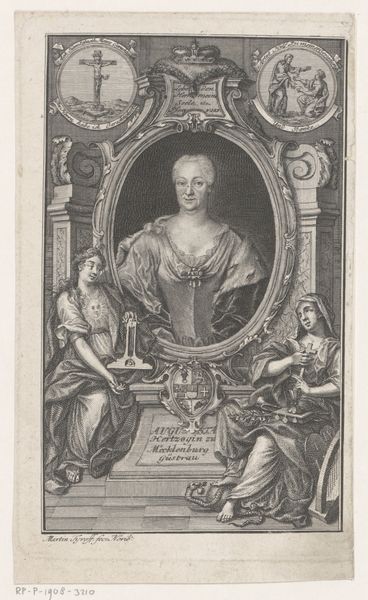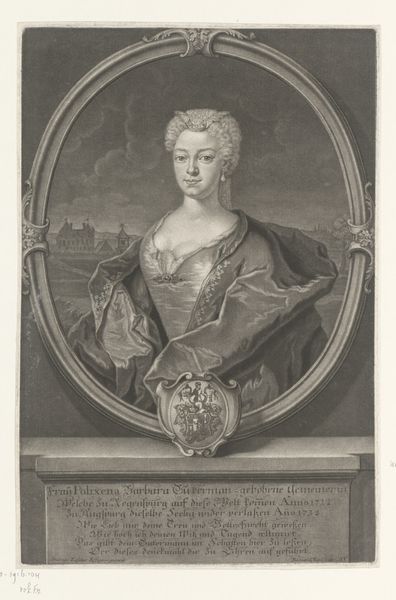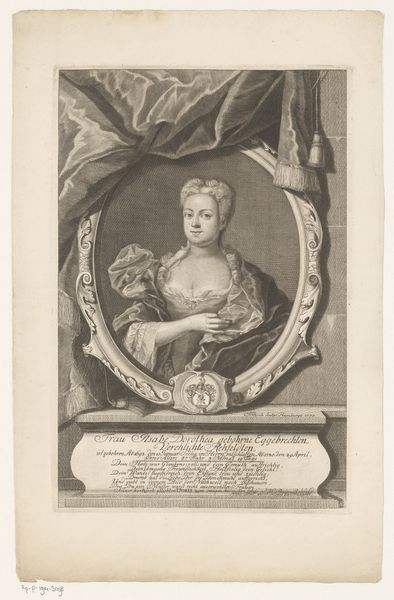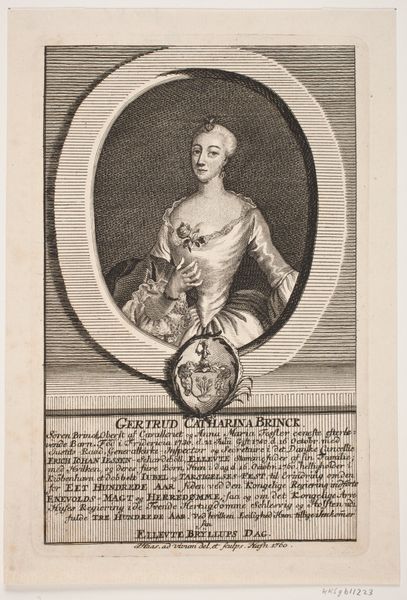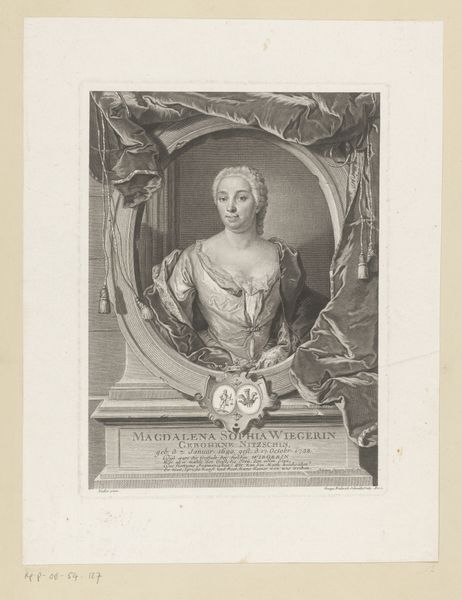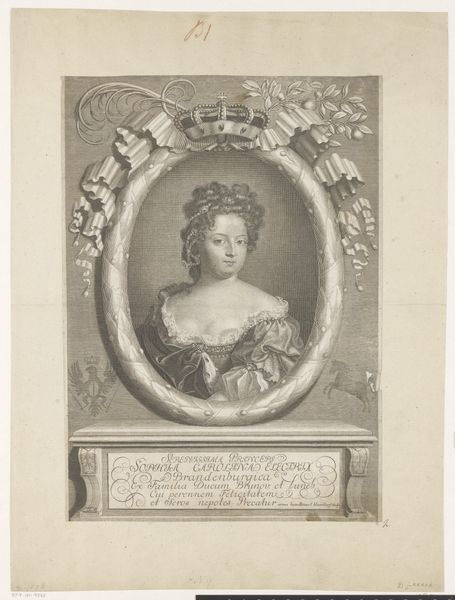
Portret van Johanna Sophia Friederika von Kalitsch 1746 - 1767
0:00
0:00
#
pencil drawn
#
aged paper
#
toned paper
#
light pencil work
#
photo restoration
#
pencil sketch
#
historical photography
#
old-timey
#
19th century
#
pencil work
Dimensions: height 285 mm, width 189 mm
Copyright: Rijks Museum: Open Domain
Curator: Here we have a portrait of Johanna Sophia Friederika von Kalitsch, crafted sometime between 1746 and 1767 by Johann Martin Bernigeroth. It resides here at the Rijksmuseum. Editor: My initial thought goes to the engraving's delicate quality and tonal range. The artist coaxed surprising volume from simple pencil work. I’m particularly struck by the rendering of her satin dress—the subtle highlights give the fabric such a palpable sheen. Curator: It is interesting how Bernigeroth positions Johanna within this fictive stone window, isn’t it? With a velvet curtain pulled aside as if staging her entrance into public view. Such dramatic framing underscores the subject’s high social standing and contributes to the politics of representation. Editor: Precisely, and one must consider what it means to portray her like this. Her status isn’t solely declared but rather materially performed through skillful printing techniques and the very texture of aged paper. Curator: There is definitely something performative about how she is situated within this image, particularly as the inscription emphasizes her noble lineage, the date of her birth, and, interestingly, also the date of her death. All that detail enhances this notion of an enduring legacy. Editor: Which also draws attention to how this commemorative print served both as a means to an end. The final version here preserves her image for posterity. But what labour did it entail, what kind of collaborative effort was put into this, and whose labour matters, right? Curator: Considering the materials and the engraver's craftsmanship—the subtleties in light and shadow—this work transcends mere representation. The textures created using tonal variation across the aged paper almost makes it seem like sculpture, in some ways. Editor: Yes, by directing our attention to the process we can appreciate not just her representation but also the web of labour, social practice and circulation required to immortalise her through printed image. Curator: Indeed. Ultimately, I believe this portrait offers insights into the ways in which societal elites have, throughout history, crafted and projected particular public personas, using mediums like print to disseminate carefully constructed identities. Editor: It makes us ponder the meaning of reproduction and consider that art extends far beyond simple aesthetics, encapsulating tangible realities of resources, skill, labour and class, all meticulously transcribed here on paper.
Comments
No comments
Be the first to comment and join the conversation on the ultimate creative platform.
